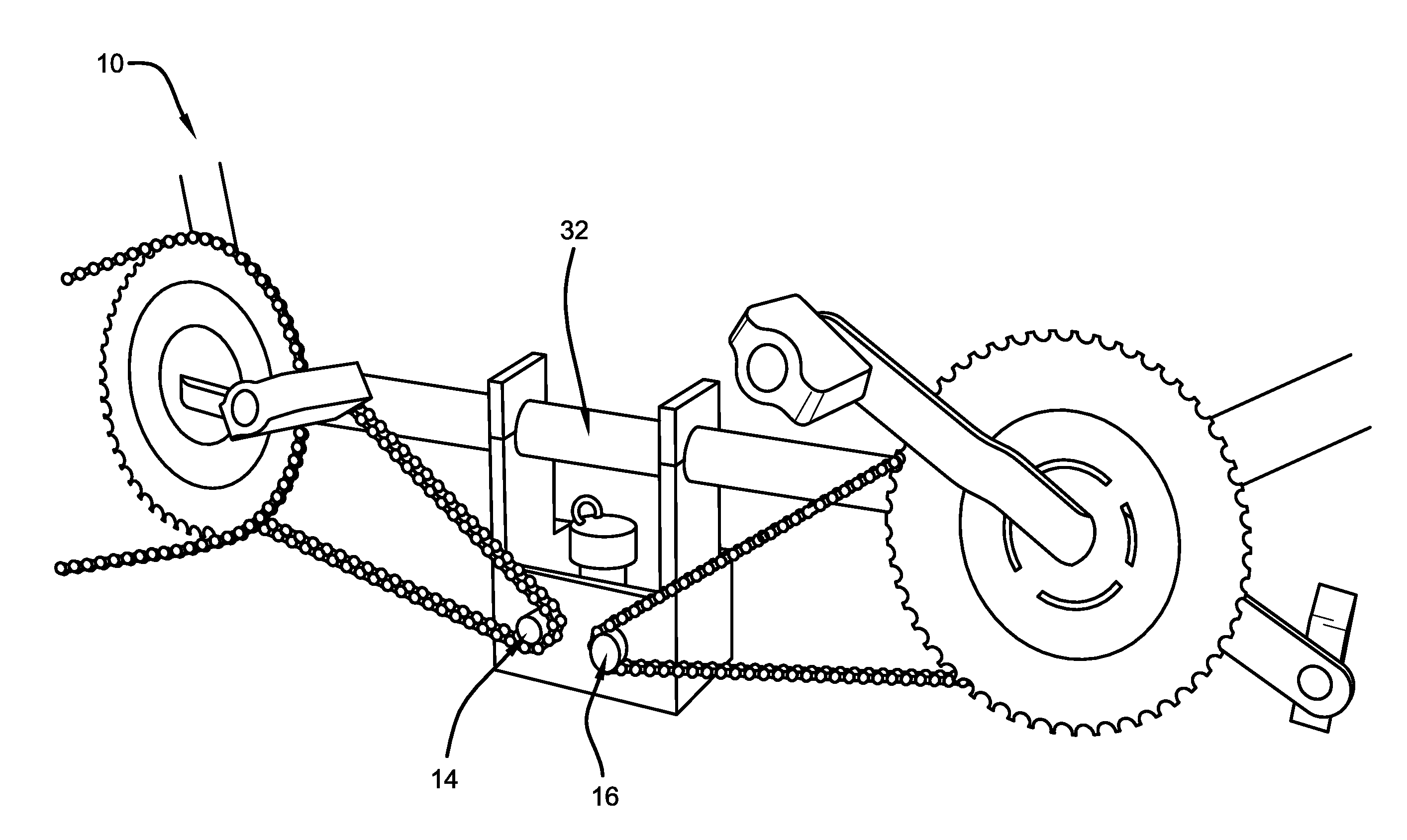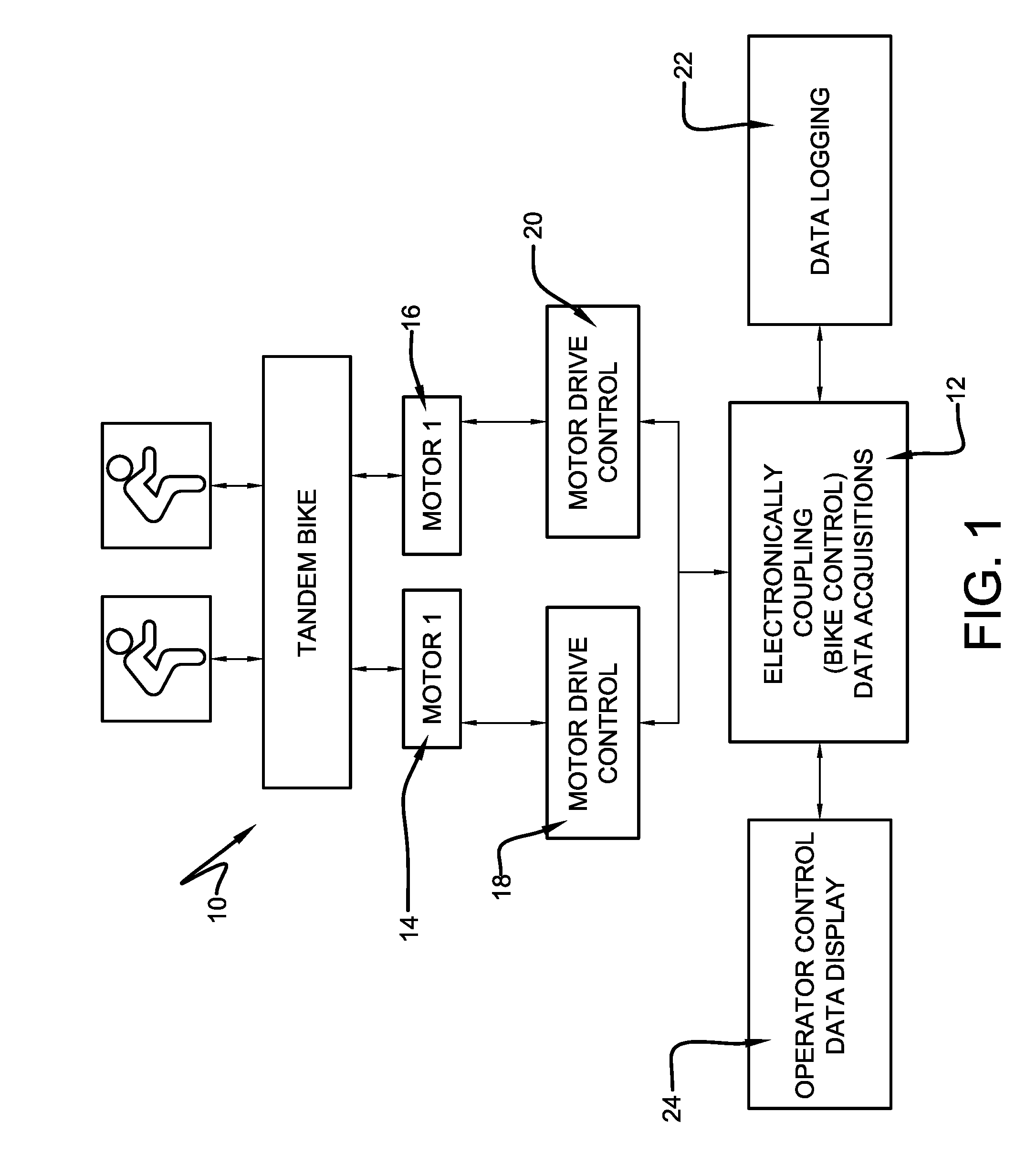Bike System For Use In Rehabilitation Of A Patient
a patient and bike technology, applied in the field of patient rehabilitation methods and equipment, can solve the problems of reduced independence, increased reliance on caregivers and the healthcare system, and progressive deterioration of motor skills, and other reduced physical and mental functions
- Summary
- Abstract
- Description
- Claims
- Application Information
AI Technical Summary
Benefits of technology
Problems solved by technology
Method used
Image
Examples
Embodiment Construction
[0022]As shown in FIG. 1, a tandem bike or system 10 which accommodates the interaction and power sharing between a trainer (i.e., a leader) and a rider (i.e., a follower) is provided. Advantageously, the tandem bike 10 eliminates the need for a mechanical coupling of pedals (not shown in FIG. 1) of the tandem bike 10 by replacing the mechanical coupling with electronic coupling. In one example the electronic coupling is provided by a programmable logic controller 12.
[0023]The tandem bike 10 operates in two modes: 1) data acquisition; and 2) real-time bike control. Advantageously, a common chain that mechanically connects the two riders is removed, and the controller 12 electrically links two or more users together. For example, the controller 12 in operating mode 1 is used to collect real-time performance data from the users (i.e., a trainer and a rider) using sensors and devices connected to, for example, bike pedals, as described in more detail below. The synchronized data sample...
PUM
 Login to View More
Login to View More Abstract
Description
Claims
Application Information
 Login to View More
Login to View More - R&D
- Intellectual Property
- Life Sciences
- Materials
- Tech Scout
- Unparalleled Data Quality
- Higher Quality Content
- 60% Fewer Hallucinations
Browse by: Latest US Patents, China's latest patents, Technical Efficacy Thesaurus, Application Domain, Technology Topic, Popular Technical Reports.
© 2025 PatSnap. All rights reserved.Legal|Privacy policy|Modern Slavery Act Transparency Statement|Sitemap|About US| Contact US: help@patsnap.com



